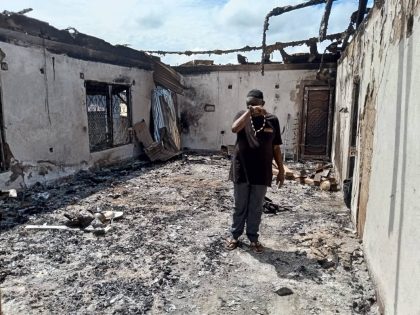The vibrant lives of old Claremont
The preservation of nostalgia by evicted black residents of one of Cape Town's now very white suburbs.

Grandmother Theresa Collop (née Neutt) with Tzaneen outside their home, 35 Mathew Rd. (Claremont Histories).
So far, a lot of what has been covered in this series has focused on digitized archival sources or social justice projects. The preservation of nostalgia has not received as much attention (with the exception of projects about nostalgia by Nigerians), though the digital realm has opened up new vistas for collective remembering. This nostalgia comes in many forms, from private messages on social media to chat rooms to more official projects like this week’s featured site, Claremont Histories.
Focusing on the suburb of Claremont in Cape Town, South Africa, and the struggles in this neighborhood following its designation as a white area under the Group Areas Act, this site pulls together photos, texts, and newspaper clippings to bring the history of Claremont to life. The main focus, however, is on the memories of the Claremont residents who contributed their photos and memories to the site. This focus is communicated clearly in the mission statement of the site.
I want to tell you a story. Or rather, a thousand stories. Stories about Claremont, the area now known as Harfield Village. Our stories are our memories, and they make us laugh, make us cry. This site is a dedication to those who lived in and share wonderful memories of Claremont before the forced removals under the Group Areas Act. They’re not all happy memories, but we would like to share both the good times and the bad. So that we don’t forget – so that nobody forgets – about the colorful, beautiful, difficult and vibrant lives of the people of Claremont.
You can navigate the content on the site in a variety of ways. You can browse through examples of the good stuff (pleasant nostalgic memories of Claremont residents) or some of the bad stuff (more unpleasant memories of forced removals and racism). You can also explore the memories of Claremont through the biographies and reminiscences of residents themselves, like Salegga Mustapha, who was raised in Claremont and is still actively involved in the neighborhood through the Claremont Re-united Alliance. Mustapha was also one of the contributors who loaned out a number of photos and artifacts for inclusion in the site, which you can view in her gallery. There is also a gallery of newspaper clippings that could provide a jumping off point for anyone interested in researching the history of this Cape Town suburb.
Follow Claremont Histories on Facebook and, if you have your own memories of Claremont, you can contribute via the Contact page on the site. You can also learn more about Claremont on South African History Online. As always, feel free to send me suggestions via Twitter (or use the hashtag #DigitalArchiveAIAC) of sites you might like to see covered in future editions of this series.



















